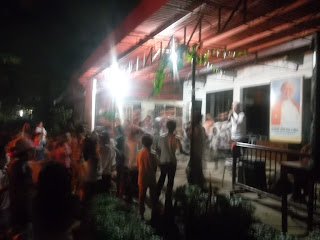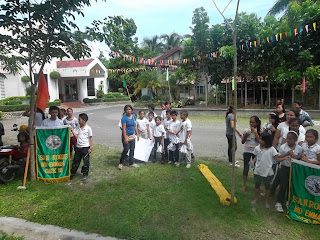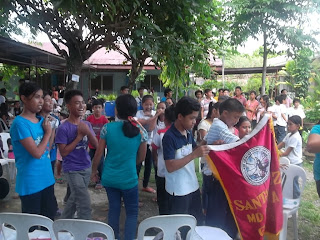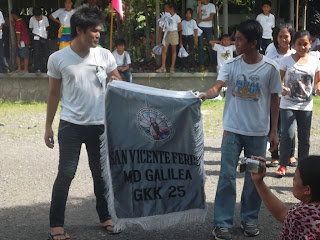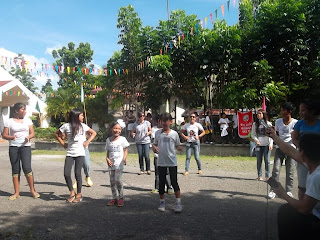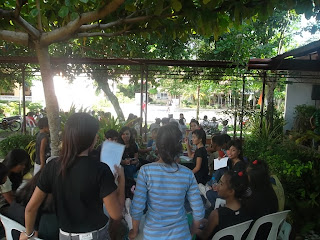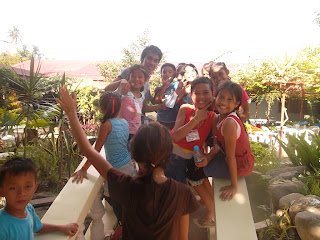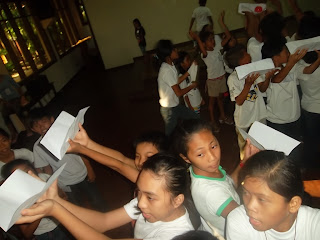
SOLEMNITY OF STS PETER AND PAUL
Homily of Bl. John-Paul II
Thursday, 29 June 2000
"Who do you say that I am?" (Mt 16: 15)
Jesus asks the disciples this question about his identity while he is with them in upper Galilee. It often happened that they would ask Jesus questions; now it is he who questions them. His is a precise question that awaits an answer. Simon Peter speaks for them all: "You are the Christ, the Son of the living God" (Mt 16: 16).
The answer is extraordinarily clear. The Church's faith is perfectly reflected in it. We are reflected in it too. The Bishop of Rome, his unworthy successor by divine will, is particularly reflected in Peter's words. (...)
"You are the Christ!". Jesus replies to Peter's confession: "Blessed are you, Simon Bar-Jona! For flesh and blood has not revealed this to you, but my Father who is in heaven" (Mt 16: 17)
Blessed are you, Peter! Blessed because you could not have humanly recognized this truth, which is central to the Church's faith, except by God's action. "No one", Jesus said, "knows the Son except the Father, and no one knows the Father except the Son and any one to whom the Son chooses to reveal him" (Mt 11: 27).
We are reflecting on this extraordinarily rich Gospel passage: the incarnate Word had revealed the Father to his disciples; now is the moment when the Father himself reveals his only Only-begotten Son to them. Peter receives inner enlightenment and courageously proclaims: "You are the Christ, the Son of the living God!".
These words on Peter's lips come from the depths of God's mystery. They reveal the intimate truth, the very life of God. And Peter, under the action of the divine Spirit, becomes a witness and confessor of this superhuman truth. His profession of faith thus forms the firm basis of the Church's faith: "On this rock I will build my Church" (Mt 16: 18). The Church of Christ is built on Peter's faith and fidelity.
The first Christian community was very conscious of this. As the Acts of the Apostles recount, when Peter was in prison it gathered to raise an earnest prayer to God for him (cf. Acts 12: 5). It was heard, because Peter's presence was still necessary for the community as it took its first steps: the Lord sent his angel to free him from the hands of his persecutors (cf. ibid., 12: 7-11). It was written in God's plan that Peter, after long strengthening his brothers in faith, would undergo martyrdom here in Rome together with Paul, the Apostle of the nations, who had also escaped death several times.
"The Lord stood by me and gave me strength to proclaim the word fully, that all the Gentiles might hear it" (2 Tm 4: 17).
These are the words of Paul to his faithful disciple Timothy: we heard them in the second reading. They testify to what the Lord accomplished in him after he chose him as a minister of the Gospel and "grasped" him on the road to Damascus (cf. Phil 3: 12).
The Lord had come to him in a blaze of light, saying: "Saul, Saul, why do you persecute me? " (Acts 9: 4), while a mysterious force threw him to the ground. "Who are you, Lord?", Saul had asked him. "I am Jesus, whom you are persecuting!" (Acts 9: 5). This was Christ's answer. Saul had been persecuting Jesus' followers, and Jesus told him that it was he himself who was being persecuted in them. He, Jesus of Nazareth, the Crucified One who Christians said had risen. If Saul now experienced his powerful presence, it was clear that God really had raised him from the dead. He, in fact, was the Messiah awaited by Israel; he was the Christ living and present in the Church and in the world!
Could Saul have understood with his reason alone all that such an event entailed? Certainly not! It was, in fact, part of God's mysterious plan. It would be the Father who would give Paul the grace of knowing the mystery of the redemption accomplished in Christ. It would be God who would enable him to understand the marvellous reality of the Church, which lives for Christ, with Christ and in Christ. And he, who had come to share in this truth, would continuously and tirelessly proclaim it to the very ends of the earth.
From Damascus, Paul would begin his apostolic journey which would lead him to spread the Gospel in so many parts of the then known world. His missionary zeal would thus help to fulfill the command Christ gave to the Apostles: "Go therefore and make disciples of all nations ..." (Mt 28: 19).(...)
The full unity of the Church!
I feel Christ's command echoing within me. It is a particularly urgent command at the beginning of this new millennium. Let us pray and work for this, without ever growing weary of hoping. (...)
May God grant us to achieve as soon as possible the full unity of all believers in Christ. May we obtain this gift through the Apostles Peter and Paul, who are remembered by the Church of Rome on this day that commemorates their martyrdom and therefore their birth to life in God. For the sake of the Gospel they accepted suffering and death, and became sharers in the Lord's Resurrection. Their faith, confirmed by martyrdom, is the same faith as that of Mary, the Mother of believers, of the Apostles and of the saints of every age.
Today the Church again proclaims their faith. It is our faith, the Church's unchanging faith in Jesus, the only Saviour of the world; in Christ, the Son of the living God, who died and rose for us and for all humanity.
| 












